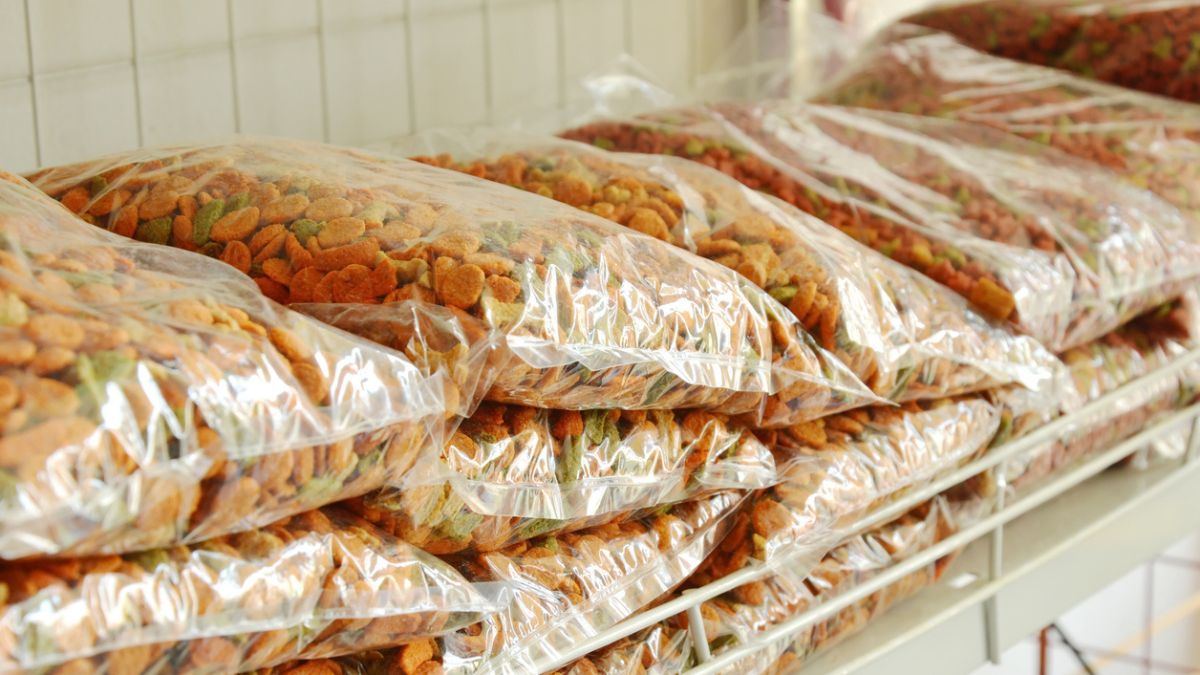Essential pet food packaging requirements to ensure quality and safety

As pet owners increasingly demand premium, sustainable options for their furry companions, manufacturers must invest in advanced pet food packaging systems to remain competitive. This article outlines the essential requirements for modern pet food packaging and explores how innovative solutions can address consumer needs while maintaining efficiency and sustainability.
Why packaging is critical in the pet food industry
Packaging is more than a protective layer—it’s a crucial component in delivering safe, high-quality products to consumers. For pet food manufacturing , packaging serves several key purposes:
- Preservation of freshness: High-quality packaging creates an airtight barrier to prevent exposure to oxygen, moisture and light, ensuring that food retains its flavour and nutritional value.
- Product safety: Proper packaging prevents contamination by keeping out bacteria, dust and other foreign particles during storage and transportation.
- Extended shelf life: Materials that resist spoilage allow products to stay fresh for longer, reducing food waste and increasing marketability.
- Enhanced consumer appeal: Packaging serves as a powerful branding tool, showcasing clear labelling, bold graphics and user-friendly features.
Key requirements for effective pet food packaging
Durable materials for protection and quality
Choosing the right materials is fundamental to ensuring the safety and freshness of pet food. Popular materials include:
- PET film food packaging: Lightweight, strong and highly resistant to moisture and oxygen, PET films are a versatile option for packaging both wet and dry pet food products.
- Laminated materials: Common in dry pet food packaging, these materials provide excellent strength and barrier properties, making them ideal for bulk products like kibble.
The selection of materials also impacts the recyclability and eco-friendliness of packaging, a growing priority for both manufacturers and consumers.
Advanced sealing technologies
Secure sealing is critical for maintaining freshness and preventing contamination. Modern pet food processing machines utilise advanced sealing systems that:
- Ensure airtight closures for extended shelf life.
- Prevent spillage during transit and handling.
- Support features like resealable zippers for convenience.
Compliance with safety standards
Adhering to safety and labelling standards is essential in the pet food industry. Packaging should:
- Be made from food-grade, non-toxic materials that won’t interact with the product.
- Include clear labelling with ingredient lists, nutritional information and allergen warnings to promote transparency.
- Meet regulatory requirements for tamper-evident seals and packaging durability.
Key Labelling requirements
Proper labelling is essential for ensuring compliance and building trust with consumers. This is why compliant labels should always include:
- Ingredient transparency: Clearly list all ingredients by weight, including additives and allergens, to meet consumer expectations and regulatory standards.
- Nutritional information: Provide protein, fat, fibre, moisture content, calorie counts and feeding guidelines to support informed decisions.
- Allergen warnings: Highlight common allergens like soy or wheat to prevent health risks for pets with dietary restrictions.
- Regulatory compliance: Include batch numbers, best-before dates and manufacturer details as per industry standards.
Consumer-friendly designs
Convenience is key for pet owners. Packaging that is easy to open, reseal and handle enhances the overall consumer experience. Features to consider include:
- Resealable closures: Useful for maintaining freshness, especially for large bags of dry pet food.
- Single-serving options: Ideal for portion control, often seen in wet food pouches.
- Lightweight designs: Easier to transport and store, appealing to on-the-go consumers.
Sustainable pet food packaging solutions
The demand for sustainable packaging for pet food is growing rapidly. Manufacturers can meet these expectations by:
- Using biodegradable and compostable materials where possible.
- Incorporating recyclable components, such as PET film food packaging, into their designs.
- Reducing overall material usage through minimalist packaging designs.
Eco-friendly materials
Sustainable materials, such as plant-based films, compostable laminates and recycled plastics, are increasingly being used in the pet food industry. These options provide the same protective qualities as traditional materials while reducing environmental impact.
Minimalist packaging
Simplifying packaging structures by using single-material designs reduces waste and makes recycling easier for consumers. Minimalist designs also cut costs, supporting both environmental and economic goals.
Energy-efficient machinery
Advanced pet food packaging equipment optimised for energy efficiency reduces the carbon footprint that goes into pet food production . These systems consume less power while maintaining high output, making them an ideal choice for eco-conscious manufacturers.
Recycling initiatives
To support pet food packaging recycling, manufacturers can:
- Design products that are easy for consumers to recycle.
- Partner with recycling programmes or offer take-back schemes.
- Use prominent labelling to educate consumers on how to dispose of packaging responsibly.
How Omori can help with labelling solutions
We offer advanced pet food packaging machines that seamlessly integrate labelling capabilities to meet both compliance and branding needs. Their solutions are designed to ensure precision, efficiency and flexibility, enabling businesses to adapt to changing consumer and regulatory demands.
Key benefits of our labelling solutions
- Accurate labelling: our machines deliver consistent and precise label application, ensuring every package meets regulatory and quality standards.
- Customisation options: Support for various label formats, including wrap-around, top-and-bottom and sleeve labels, allows for versatile branding and product presentation.
- High-speed performance: Pet food automation systems ensure labels are applied quickly without compromising accuracy, ideal for high-volume production lines.
- Sustainable features: Compatibility with eco-friendly labelling materials supports brands aiming to reduce their environmental footprint.
- Enhanced consumer engagement: Machines can integrate technologies like QR codes, providing consumers with access to detailed product information or recycling instructions.
By incorporating our pet food packaging machines, businesses can streamline their packaging and labelling processes, ensuring compliance while maintaining a strong, market-ready product.
Conclusion
Effective pet food packaging is a cornerstone of success in the pet food industry. By meeting essential requirements such as durability, safety, consumer convenience and sustainability, manufacturers can deliver products that align with consumer expectations and industry standards.
With its innovative and flexible solutions, Omori UK helps businesses achieve these goals. From state-of-the-art pet food packaging machines to eco-friendly options, their equipment ensures quality, efficiency and environmental responsibility.

